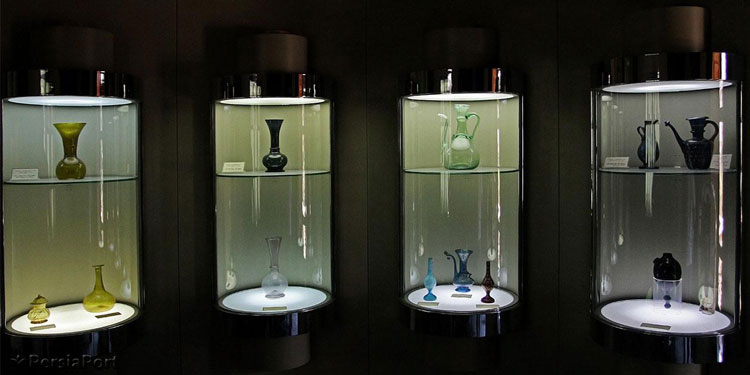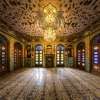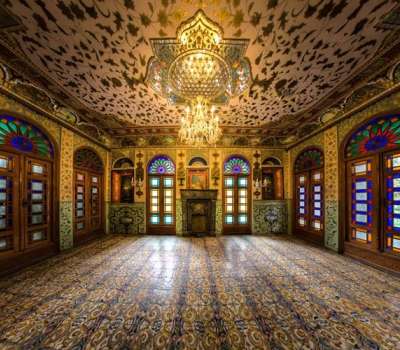
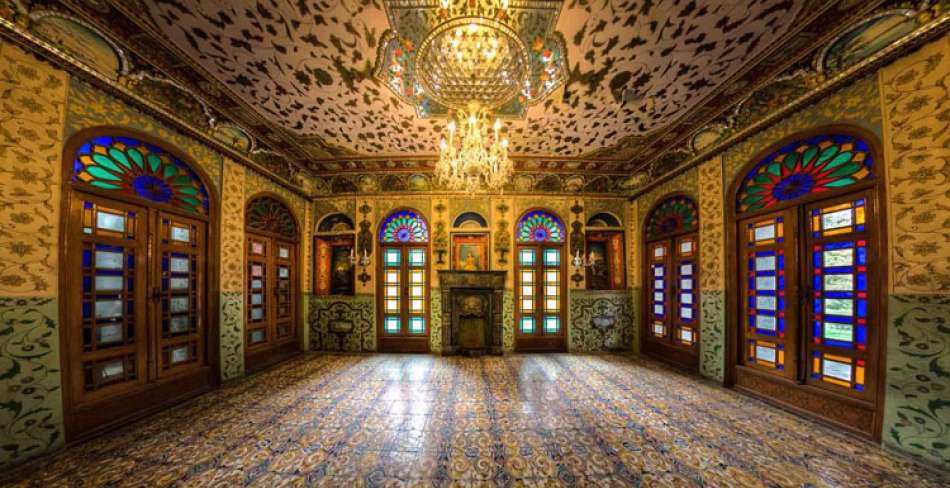
Tehran is the capital of Iran. Tehran surrounded by the Alborz Mountain from the North and by the central desert from the South. Tehran is the largest metropolis in Iran as well as the Western Asia in terms of population with a population of 14 million. Tehran gets its importance in 1795 with the rise of Qajar dynasty. So some buildings and Palaces were constructed one after another and continued to be built at the time of the next dynasty, Pahlavi. In current article, we introduce Tehran better and have a trip through it, let’s go.
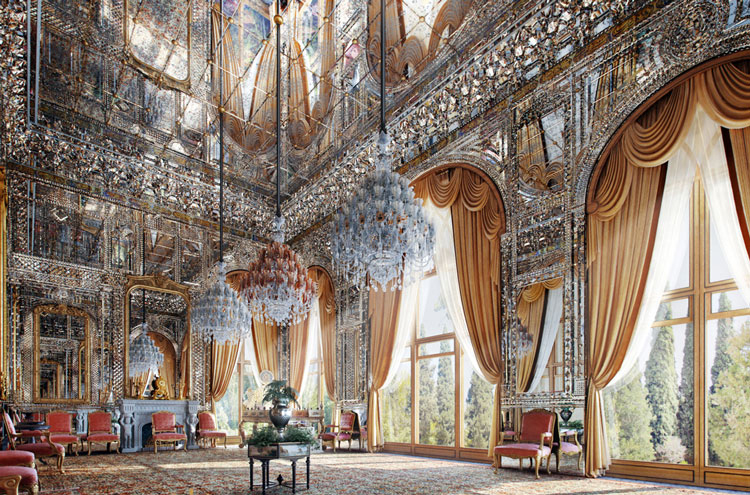
National Museum of Iran
National Museum of Iran is the largest and oldest Museum in Iran. It is a small but informative museum about the history of Iran. The National Museum of Iran includes two parts in separate buildings. One of these parts is called The Museum of Ancient Iran which where a collection of Iranian historical and prehistoric works is kept and displayed and it was opened in 1937. The architecture of this building is influenced by Taq Kasra or Kaustra Arch, a monument from Sassanid era. The other part is called The Museum of the Islamic Era displaying treasures from the early years of the Islamic era to the present. It is built by inspiration of the Bishapur Palace dating back to Sassanid era and was opened in 1997.
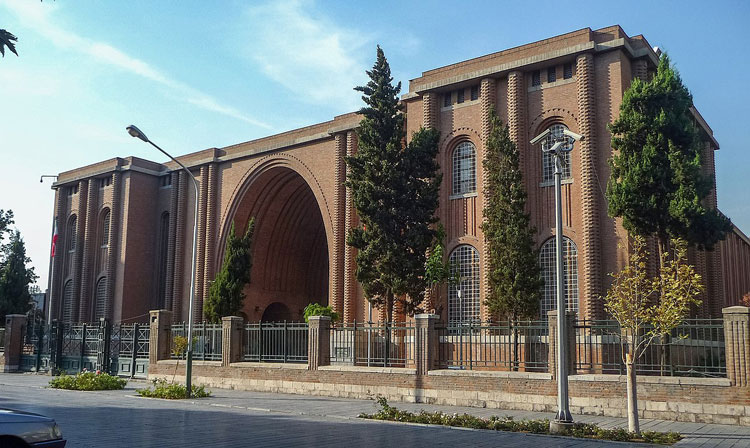
The National Jewelry Treasury Museum
The National Jewelry Treasury Museum or The Jewelry Museum in short is one of the highlights for travelling to Tehran. The museum is located in central Bank of Islamic Republic of Iran and there are really a lot of beautiful pieces of jewelry to see there, in other words Jewelry Museum includes a treasure of jewelry left by the previous dynasties in Iran. Most of the collections dates back to Safavid, Afsharid, Qajar and Pahlavi eras. Some of these valuable pieces of jewelry include the Daryai Noor Diamond (Sea of Light), the Pahlavi Crown, the Taj Kiyani (belonging to Fath Ali Shah), the Jewelry Globe belonging to Nasereddin Shah made of 51 gemstones and the Sun Throne belonging to Fath Ali Shah.
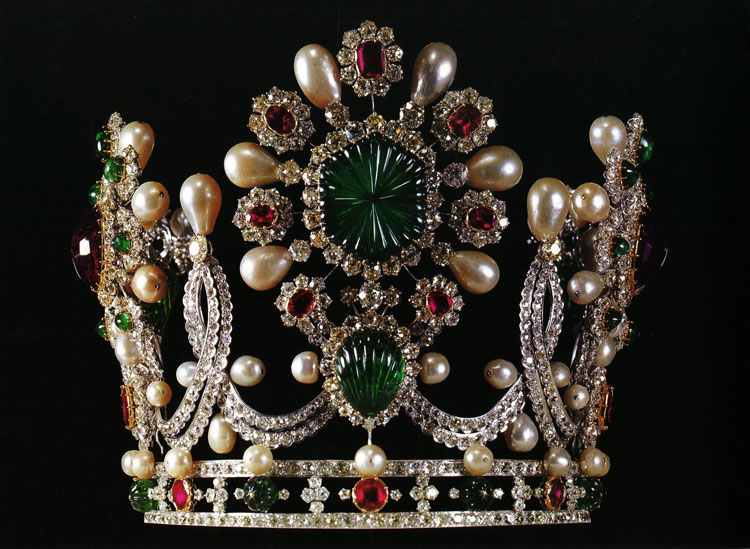
The Grand Bazaar of Tehran
The Grand Bazaar of Tehran is an old historical bazaar and the most important one in Tehran which dates back to the Qajar era. It is separated to several long parts, in each part, a particular type of goods is traded. The bazaar includes not only stores and hops but also banks, mosques, restaurants, guest houses, zurkhaneh (Traditional Persian gymnasium), public bathrooms, etc. The architecture of the Grand Bazaar is unique. You can see beautiful arches, zig-zag corridors, and traditional air-conditioning systems. To experience a real Iranian trading life style, walk there and enjoy it.
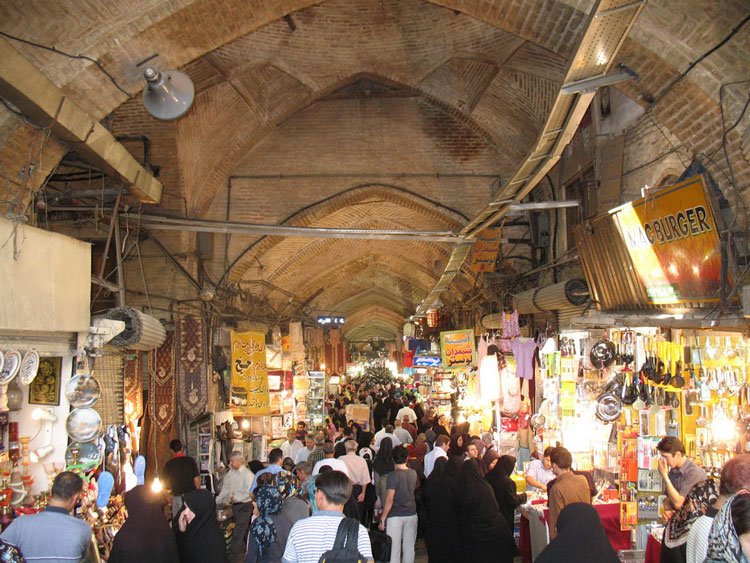
Sa'dabad Complex
Sadabad Complex is a cultural and historical complex, actually a large collection of palaces, which was constructed at Qajar period. Then Reza Shah Pahlavi and his son, Mohammad Reza Pahlavi, lived there in Pahlavi period. After the 1979 Revolution, Sadabad Palace is used as a museum. The whole complex includes 18 palaces belonging to the Qajar and Pahlavi families and their royal relatives, not all these palaces are open to public. But some of the palaces are open to visit and reflects the glory of the Saababad Complex.
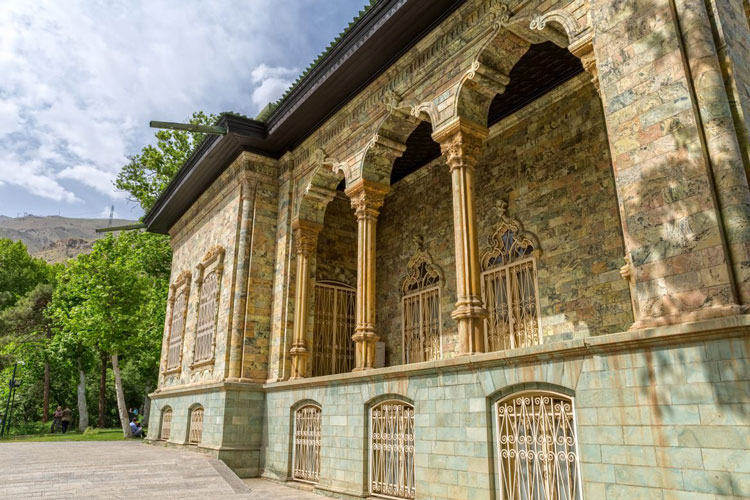
Niavaran Palace Complex
Niavaran Palace Complex is a modern palace that reveals the recent history of Iran. Niavaran Complex includes several palaces and monuments such as Sahebqaraniyeh Palace and Ahmad Shahi Pavilion dating back to the Qajar. Niavaran Palace is the most important monument in the complex belongs to Pahlavi era and it was used as the primary residence of the king and royal family. Moreover, you can find some small gardens and Pahlavi School, royal school, there.
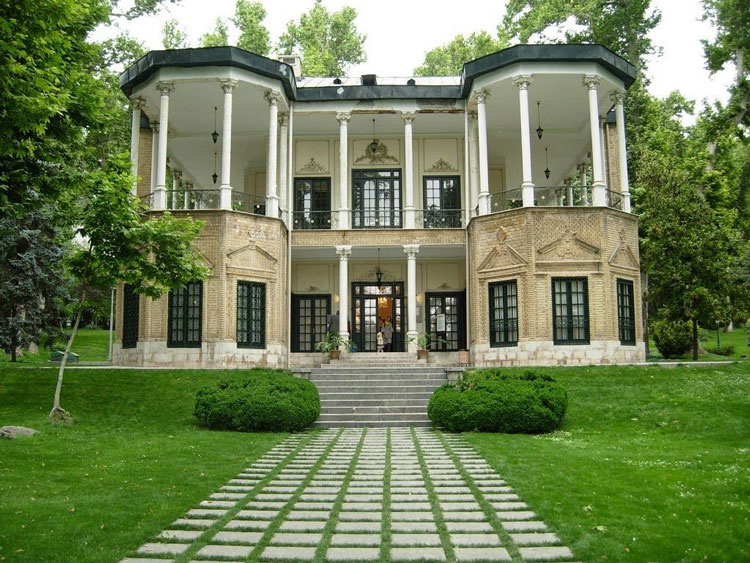
Golestan Palace
Golestan Palace is an incorporation of the history, Persian art and Western architecture. It is one of the oldest historic monuments in Tehran dating back to Safavid era. Although the historical Golestan Palace was constructed at the time of Shah Abbas in Safavid era; it does not indicate any architectures’ elements of that time. It seems that the palace dates back to Zandy period due to the architecture and art works. Naser al-Din Shah made a lot of changes in Golestan Palace buildings during his reign in Qajar period. Golestan Palace was the official residence of Qajar dynasty. Although the Pahlavi constructed their own more modern palaces, Golestan Palace was still used for formal occasions during Pahlavi era. The palace was registered as a UNESCO world heritage site in 2013.
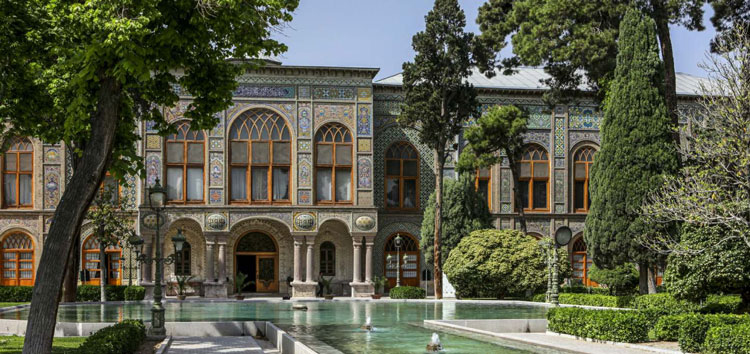
Azadi Tower
The word Azadi means liberty in Persian. The Azadi Tower, or as Iranian call it Borj-e Azadi, which was formerly known as Shahyad Tower was built in Azadi Square under the command of Mohammad Reza Pahlavi, the last king of Iran, in 1971. Borj-e Azadi was constructed as a symbol of modern Iran to mark the 2500th year of the foundation of the Imperial State of Iran. The tower is in white color and it is about 45 meters high including a Museum of Lithology in the basement, some craft shop. Azadi Tower’s architectural style is a combination of both Iranian architectural style in all times. Azadi Tower is the first and the main symbol for Tehran that most Iranian know it as the alliance symbol. You can climb the tower to view the whole capital city of Iran and surrounding mountains from top.
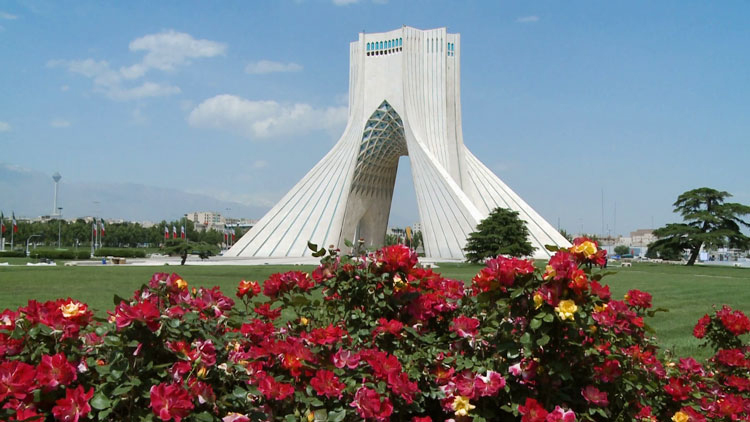
Milad Tower
Milad Tower is a multi-purpose and the most modern tourist attraction in Tehran. Milad Tower which is also known as Tehran Tower is the new symbol of the capital. Borj-e Milad with the height of 435 meters (from base to the top of the antenna) is the tallest tower in Iran and the sixth tallest tower in the world and it can be seen from every place in Tehran. Milad Tower was built in 11 years, 1997- 2009. The tower includes normally the features of modern towers such as an art gallery, a cafeteria, a revolving restaurant, malls, a coin museum, open observation desk, malls, parking, etc. In the open observation desk, you can see a nice view of Tehran both on days and nights.
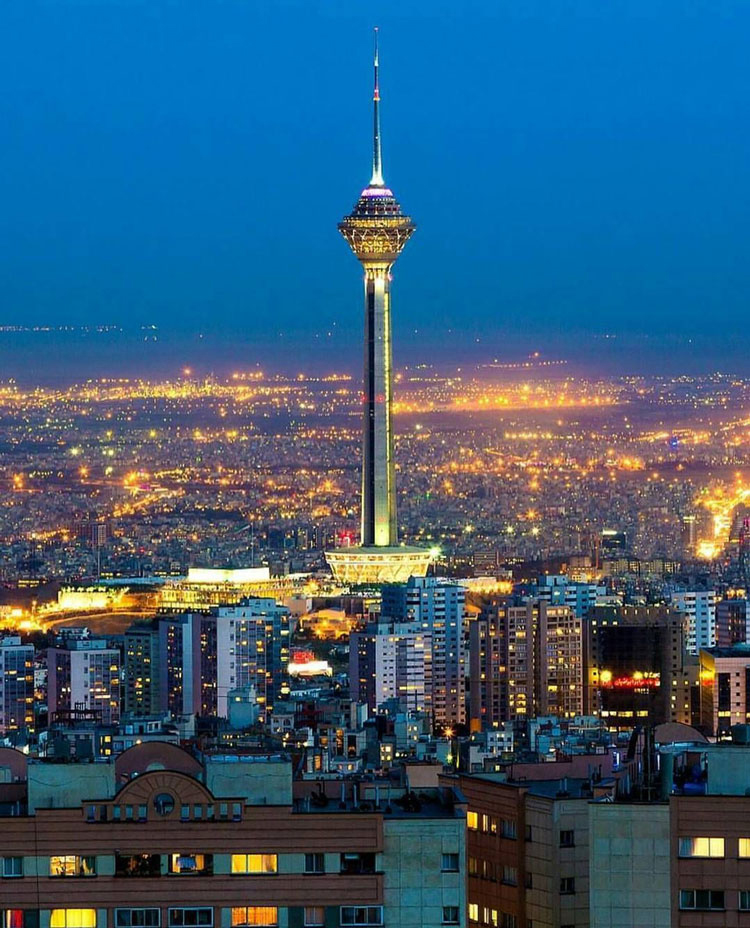
Tehran Museum of Contemporary Art
Tehran Museum of Contemporary Art is one of the most famous museums in Iran built in 1977. It is considered as a remarkable collection of modern artwork of the great Iranian, European, and American artists. Its architectural style is modern inspired by traditional Persian architecture like the structures of a badgir (wind tower) and philosophical concepts. The Museum of Contemporary Art contains the important masterpieces such as the works of Gauguin, Renoir, Picasso, Magritte, Ernest, Pollock, Warhol, Levitt, Jacques and etc. Also a very important and comprehensive collection of Iranian modern and contemporary art is kept and displayed in the museum. The beautiful statues of contemporary artists such as Henry Moore, Alberto Giacumti and Parviz Tanavoli etc. are displayed in the green space of the museum.

Tughrul Tower
Tughrul Tower is located in the city of Rey in Tehran province. The tower dates back to Seljuk era. Also it is known as Caliphate Yazid Tower and it homes the tomb of a Seljuk ruler, Tughrul Beg after who the tower was named. Tughrul Tower used to have a dome which was destroyed due to an earthquake, now the height of the tower is about 20 meters. It is believed that Borje Toghrol acts like a Gnomon of a sundials telling the time of day.
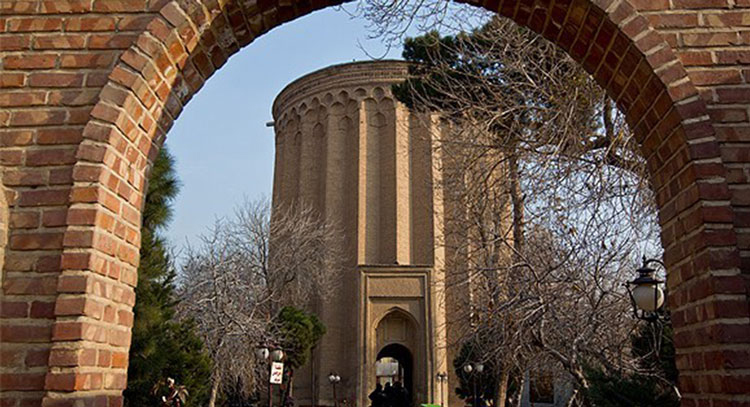
The Carpet Museum of Iran
The Carpet Museum of Iran is a cultural museum located in Tehran. The building of the museum was founded by the order of Farrah Pahlavi, the last queen of Iran, in 1976. Various Persian carpets from the 17th century to the present are displayed in the museum. Tehran Carpet Museum reflects Iranian culture, history, religion, literature and etc. The museum has a very modern and nice architecture and it looks like a carpet loom from outside. This Museum will give the visitors an insight into the history of Persian carpet weaving and the amazing carpet culture of Iran.

Masoudieh Palace Complex
Masoudieh Palace Complex is one of the historical houses in Tehran which dates back to Qajar period. The building of the palace is located in the middle of a garden. It was constructed in 1878 by Naser Al-Din Shah as a gift to his son, the prince Mass’oud Mirza Zell-e Soltan. The palace is a popular tourist site owing to visit the magnificence its rich history and architecture. Masoudieh Palace is decorated in a mixed Iranian and European style with marvelous stone works, wooden windows with stained glasses. However, the architecture of the palace clearly reveals the influence of European architecture.
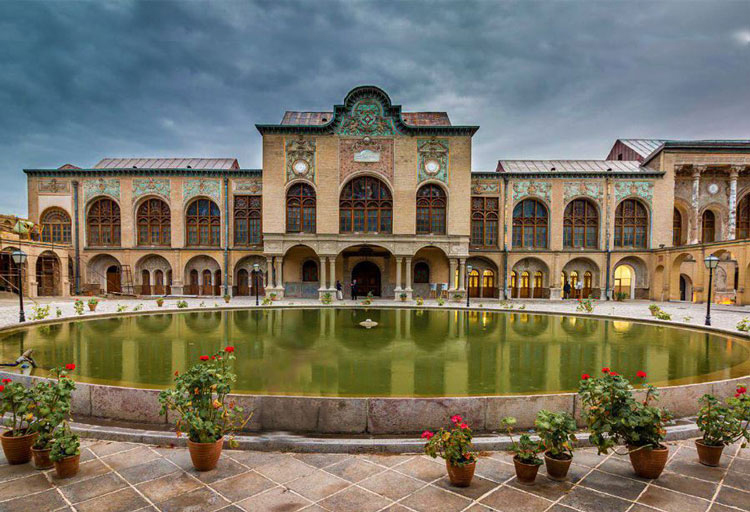
Tabiat Bridge
The word Tabiat means nature. Tabiat Bridge, Nature Bridge, which is located in the north of Tehran, is the biggest with 270-meter-length overpass for pedestrians and connects two public parks. The Nature Bridge of Tehran is an architectural masterpiece and one of the symbols of present Iranian architecture. The bridge was opened to public in 2014. It was designed by Leila Araghian, a 26-year-old lady architect. While you are walking over Tabiat Bridge, it offers you a beautiful and great view of Tehran, especially at night. It is not just a footbridge but a place for meeting family and friends and enjoying yourself. There are also a number of cafes and restaurants where you can have a delicious meal or just a snack.
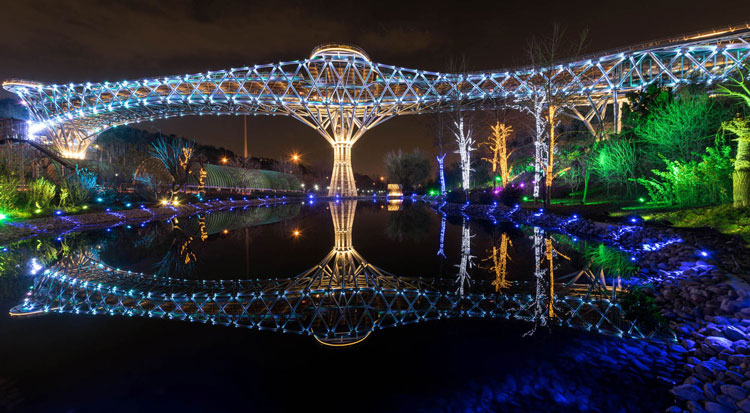
Tochal Telecabin
Tochal is a mountain and ski resort located on the Alborz Mountain Range in north of Tehran. Tochal Mountain has the longest connected gondola lift in the world with the length of 7500 meters. Tochal Complex includes Tochal Teleccabin, Tochal Ski Resort and a hotel. The path that the gondola lift pass through has its own specialties. It is a pleasure to enjoy extraordinary views of Tehran from the top of the mountains around in different seasons. If you travel to Iran during the winter and skiing is a type for you, do not miss Tochal Complex.
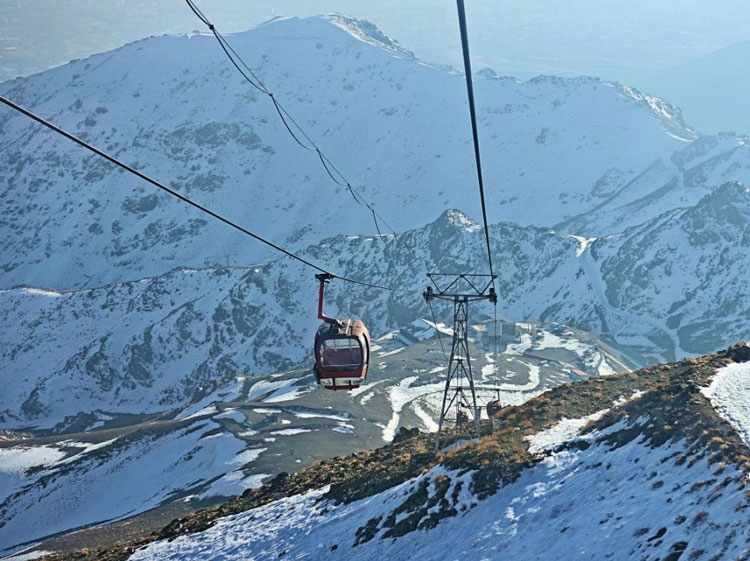
Saint Sarkis Cathedral
Saint Sarkis Cathedral is an Armenian church located in Tehran. It was constructed by Markar Sarkissian, an Armenian benefactor from 1964 - 1970. The cathedral was designed by Engineer Eugene Aftandilian. Saint Sarkis Cathedral is also regarded as the largest church and symbol of Christianity in Tehran. It is 36.5 meters long and 17.8 meters wide. The church is covered with white marble and was originally constructed without interior columns; however, later four columns were added to it. The cathedral includes a hexagonal dome, two bells and three entrances, one of them is the greater and main and the others are smaller ones located in the north and south of the building. The architecture of Saint Sarkis Cathedral is influenced by the architecture of Medieval Ages and the modern Armenian architecture.

The Glassware and Ceramic Museum of Iran
Abgineh Museum of Tehran, mostly known as the Glassware and Ceramic Museum of Iran, is located in Si-e Tir Street, one of the most famous and popular streets among Iranians and tourists because of the various cafes and restaurants as well as different museums and historical monuments. The Glassware and Ceramic Museum is located in a beautiful historical building which dates back to the lately Qajar era and early Pahlavi period. The building belongs to Ahmad Qavam, one of the politicians of Qajar era who lived in the house until 1951 and then the house was used as the embassy of Egypt for 7 years and then that of Afghanistan. Finally, it has opened as a museum in 1980. The two-floor building is constructed in an Octagonal form in a unique Persian-European architecture. You can go to the second floor climbing some wooden steps in Russian style located in the middle of the first floor. The building of the museum includes two entrance halls and six main halls and each section displays items from different eras of the glassware and ceramic in Iran, from 1st millennium BC up to now. In addition to the Iranian objects, the European ones dating back to the 18th and 19th centuries are also displayed. Like most of Iranian houses, the house consists of an inner courtyard and outer courtyard. Not only will the objects surprise you, the building is also an architectural masterpiece. Abgineh Museum is one of the most visited museums in Iran which attracts about two million tourists every year from all over the world.
